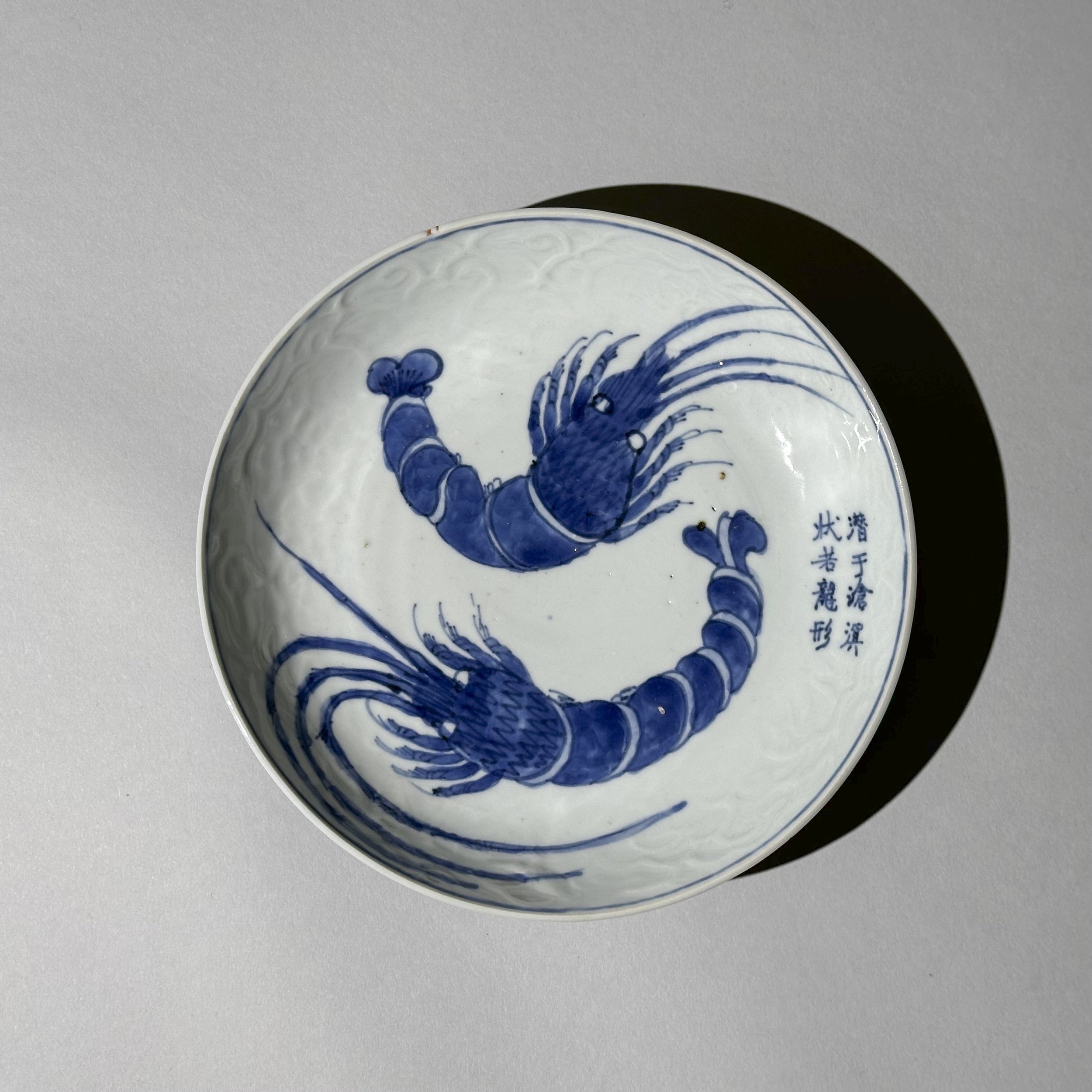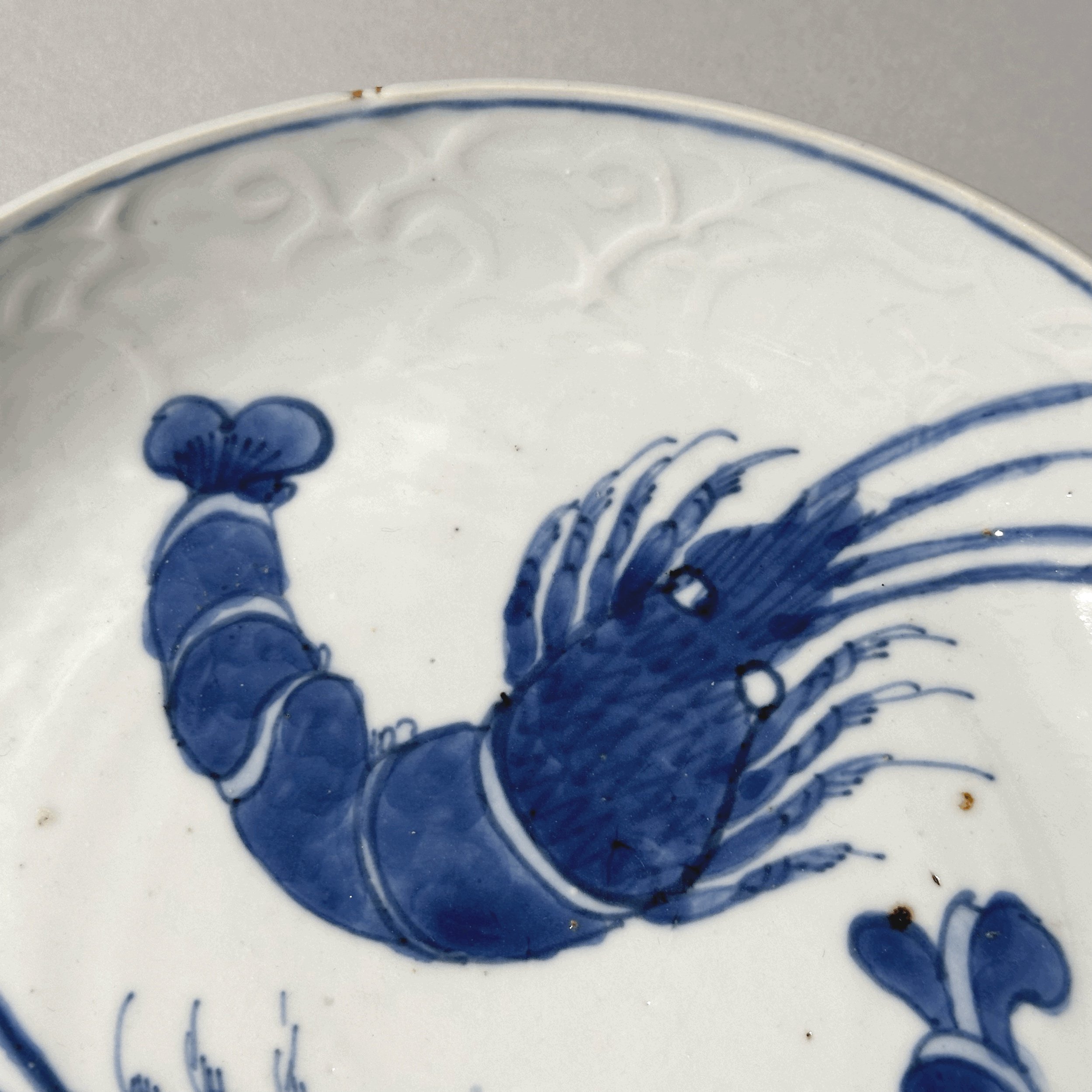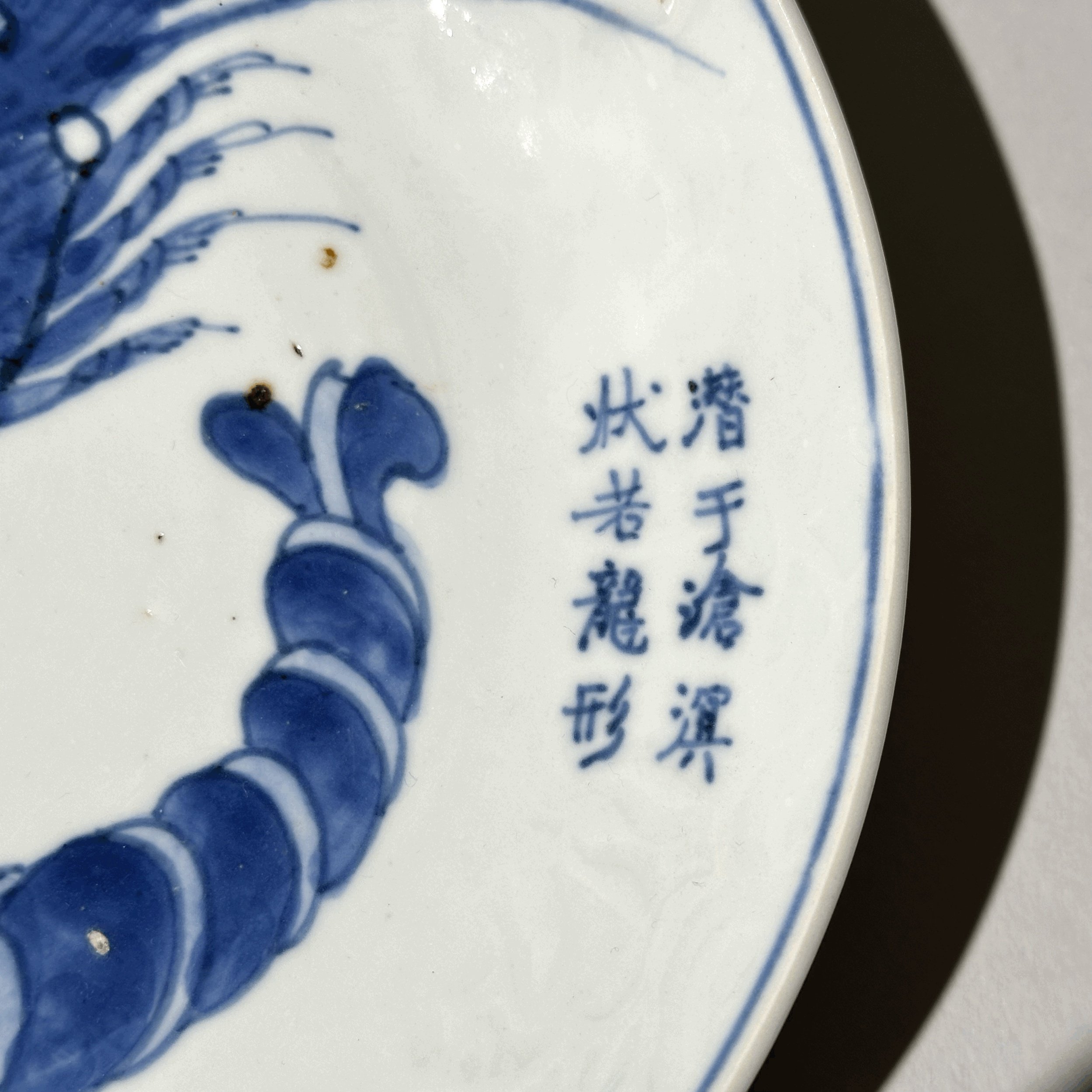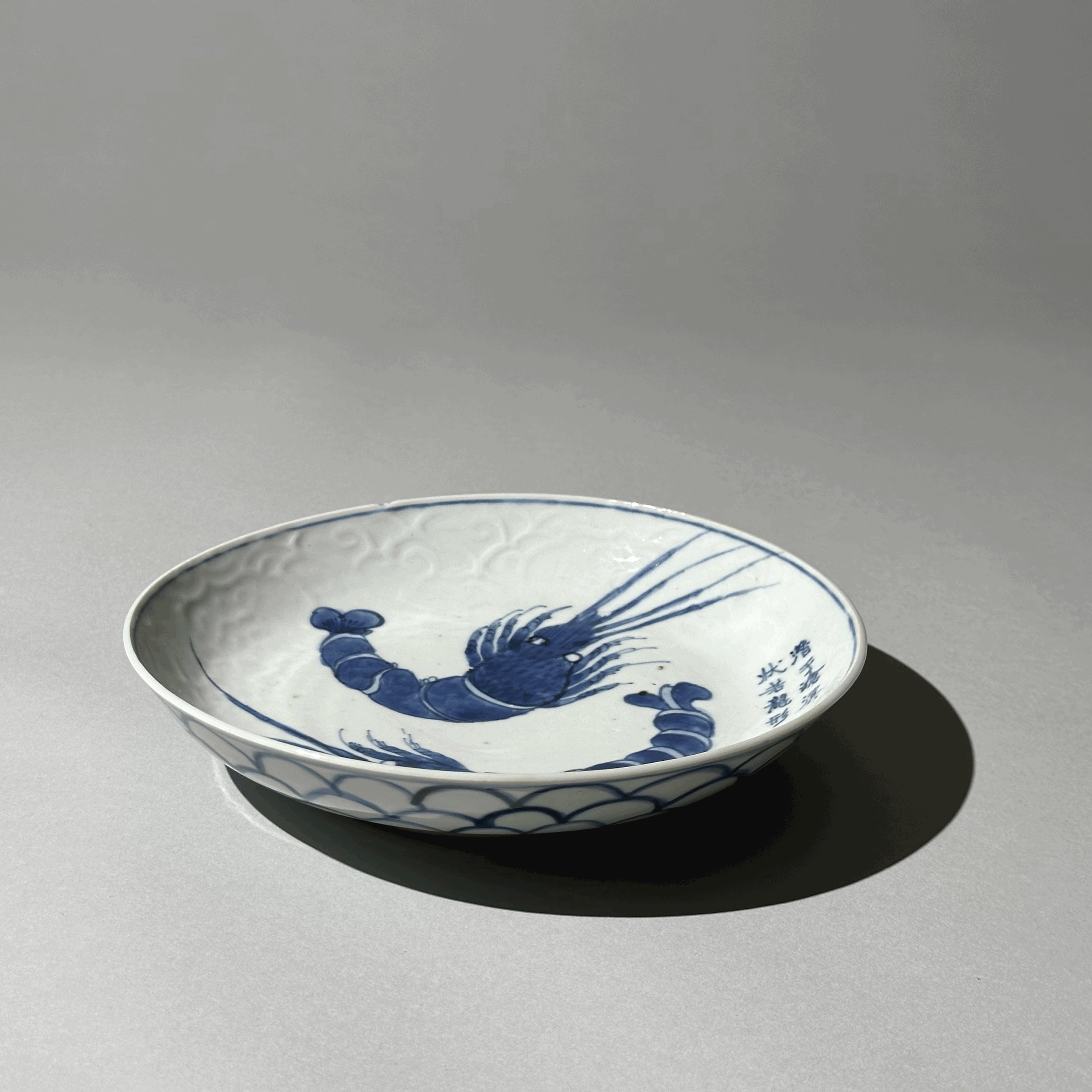 Image 1 of 5
Image 1 of 5

 Image 2 of 5
Image 2 of 5

 Image 3 of 5
Image 3 of 5

 Image 4 of 5
Image 4 of 5

 Image 5 of 5
Image 5 of 5






19. Inscribed dish with lobster design
Jingdezhen, China
Ming Dynasty, Chongzhen Period (1627-1644)
With a cavetto moulded with stylised water design, decorated with two lobsters and an eight-character inscription translating to ‘Lurking in the vast ocean, their forms resemble dragons’, the reverse with a six-character ‘Daimin Sentoku nensei’ (Chinese: Da Ming Xuende nian zhi). 4cm high, 20cm diameter. Together with an old Japanese wooden box. Catalogue 109.
For an almost identical example see Kosometsuke: Monochrome Section, Masahiko Kawahara, Kyoto Shoin Co., Ltd., 1977, p. 169 / pl. 666.
Note: At first glance the inscription appears to simply refer to a similarity between the appearance of lobsters and dragons, however there is a deeper literary significance - ‘lurking’ implies stillness and hidden power, and ‘vast ocean’ evokes the boundlessness of the Tao, and dragons symbolise transformation of the mundane into the sublime. It seems to suggest that the true way to greatness is in cultivating humility, quietness and oneness with nature and the Tao. Though they appear as simple creatures of the sea, these lobsters, like sages in obscurity, conceal the power and dignity of dragons.
Condition report (carefully viewed under UV, strong light and magnification): one small area to the rim with two glaze peels (firing/production flaw), and small iron spots to the interior - very fine condition with no cracks, chips or restoration.
Jingdezhen, China
Ming Dynasty, Chongzhen Period (1627-1644)
With a cavetto moulded with stylised water design, decorated with two lobsters and an eight-character inscription translating to ‘Lurking in the vast ocean, their forms resemble dragons’, the reverse with a six-character ‘Daimin Sentoku nensei’ (Chinese: Da Ming Xuende nian zhi). 4cm high, 20cm diameter. Together with an old Japanese wooden box. Catalogue 109.
For an almost identical example see Kosometsuke: Monochrome Section, Masahiko Kawahara, Kyoto Shoin Co., Ltd., 1977, p. 169 / pl. 666.
Note: At first glance the inscription appears to simply refer to a similarity between the appearance of lobsters and dragons, however there is a deeper literary significance - ‘lurking’ implies stillness and hidden power, and ‘vast ocean’ evokes the boundlessness of the Tao, and dragons symbolise transformation of the mundane into the sublime. It seems to suggest that the true way to greatness is in cultivating humility, quietness and oneness with nature and the Tao. Though they appear as simple creatures of the sea, these lobsters, like sages in obscurity, conceal the power and dignity of dragons.
Condition report (carefully viewed under UV, strong light and magnification): one small area to the rim with two glaze peels (firing/production flaw), and small iron spots to the interior - very fine condition with no cracks, chips or restoration.
